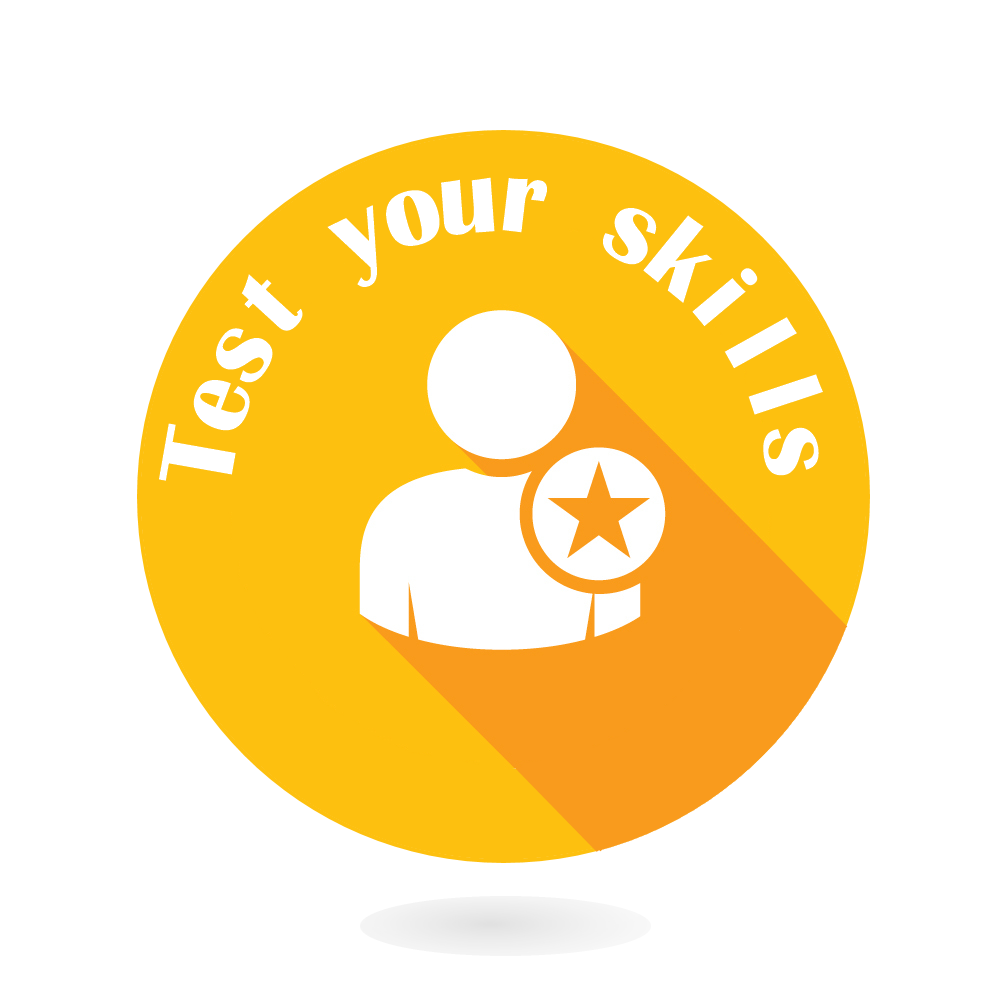Microsoft Power Platform Developer
pl-400
5 days
Interested in a private company training? Request it here.
Use imperative development techniques for canvas apps in Power Apps
Learn how to use imperative vs. declarative development.
- Imperative versus declarative development
- The three types of variables in Power Apps
- Global variables
- Contextual variables
- Collections
- Additional variable concepts
- Exercise - Using the variables and collections
- Check your knowledge
Perform custom updates in a Power Apps canvas app
With some Power Apps canvas apps, a form isn't the solution. This module focuses on how to perform custom updates when your data isn't in a form.
- Sometimes you need something more than forms
- Use the Patch function to create and edit records
- Delete records from data sources and collections
- Use the Patch function to update a Gallery
- Check your knowledge
Use Dataverse choice columns with formulas
Explore how you can use Power Fx formulas to work with Microsoft Dataverse choice and choices columns. These column data types present the user with a fixed list of values defined by the maker.
- Filter Dataverse choice columns with Power Fx formulas
- Modify choice and choices values
- Exercise - Dataverse choice columns
- Check your knowledge
Reduce complexity in your data model with Dataverse table relationships
Learn how to use Microsoft Dataverse relationships in canvas apps from Microsoft Power Apps.
- Work with one-to-many relationships
- Work with many-to-many relationships
- Exercise - Work with Dataverse relational data
- Check your knowledge
Work with relational data in a Power Apps canvas app
Learn how to work with relational data in Power Apps canvas apps.
- What is relational data?
- Work with relationships in Power Apps
- Exercise - Work with relational data
- Microsoft Dataverse for apps makes relationships even easier
- Check your knowledge
Work with data source limits (delegation limits) in a Power Apps canvas app
Delegate data with Power Apps.
- Delegation overview
- Functions, predicates, and data sources combine to determine delegation
- Delegation warnings, limits, and non-delegable functions
- Check your knowledge
Complete testing and performance checks in a Power Apps canvas app
Do you want to test your app and improve its performance? This module helps you understand how to test an app and improve performance.
- The importance of thinking about performance
- Improve performance with data sources
- Testing and troubleshooting your app
- Exercise - Use the Concurrent function to test performance
- Check your knowledge
Optimize app load time
Learn how you can evaluate and improve app load times. By regularly reviewing and measuring your app, you can proactively identify and remediate startup performance problems.
- Use Monitor to troubleshoot app start performance issues
- Optimize App.OnStart
- Data load strategies
- Check your knowledge
Use Monitor to troubleshoot Power Apps
Learn how the Monitor tool from Power Apps Studio can help you proactively identify, troubleshoot, and resolve issues within your app.
- Identify and resolve common problems
- Collaborate by using Monitor
- Exercise - Troubleshoot and debug Monitor
- Check your knowledge
Use Power Apps Instrumentation with Application Insights
This module explores how to set up a Microsoft Power Apps canvas app to send telemetry to Application Insights.
- Set up an app for Application Insights
- View Application Insights data
- Custom logging with trace
- Exercise - Collect and analyze telemetry data
- Check your knowledge
Get started with Power Automate
Learn how to create simple flows to make your life easier.
- Introducing Power Automate
- Create your first flow
- Exercise - Create recurring flows
- Exercise - Monitor incoming emails
- Exercise - Share flows
- Troubleshoot flows
- Check your knowledge
Introduction to expressions in Power Automate
Learn how to write expressions in Power Automate.
- Introduction to expressions
- Get started with expressions
- Notes make things easier
- Types of functions
- Write complex expressions
- Exercise - Creating a manual flow and using expressions
- Check your knowledge
Use Dataverse triggers and actions in Power Automate
Extend Dataverse usability by integrating with Power Automate to reduce or eliminate repetitive business processes.
- Dataverse triggers
- Query data
- Create, update, delete, and relate actions
- Exercise - Create a cloud flow with a Dataverse connector
- Check your knowledge
Introduction to Microsoft Power Platform developer resources
The goal of this module is to give a broad-scoped overview of the developer experience as it relates to Microsoft Power Platform. It will cover a high-level introduction how the ecosystem is represented, with the intended audience being a software developer with limited experience in working with Microsoft Power Platform.
- Introduction to Microsoft Power Platform for developers
- Overview of Dataverse and the Common Data Model
- Extending Power Platform with Azure
- Power Platform environments
- Exercise - Prepare development environment
- Check your knowledge
Use developer tools to extend Power Platform
This module will focus on the available developer tools that can help you perform development activities with Power Platform.
- Introduction to developer Power Platform tooling
- Exercise - Use the Power Apps CLI
- Solutions overview
- Deploy apps with Package Deployer
- Exercise - Install and use developer tools
- Check your knowledge
Introduction to extending Power Platform
This module will focus on the underlying solution architecture from a technical perspective and what extensibility options exist. It will also cover the ever-important element of Microsoft Power Platform development, which is the decision-making process of determining when to use configuration versus code.
- User experience extensibility
- Dataverse extensibility
- Exercise - Create a custom API
- Determine when to configure or when to code
- Check your knowledge
Work with Dataverse Web API
Discover how to work with the Dataverse Web API, including authorizing with OAuth and using OData to query data.
- Introduction to the Microsoft Dataverse Web API
- Insomnia
- Authenticate against Microsoft Dataverse using OAuth
- Use OData to query data
- Use FetchXML to query data
- Call Power Automate actions from the Web API
- Use the Web API to impersonate another user
- Track entity data changes with change tracking and the Web API
- Check your knowledge
Perform common actions with client script in Power Platform
The goal of this module is to review how to achieve common user experience automation procedures through Client Script. This module is intended to serve as a practical guide for how to solve real-world scenarios that are frequently encountered during Microsoft Power Platform implementations.
- Introduction to client-side scripting
- Upload scripts
- Event handlers
- Context objects
- Client scripting common tasks
- Exercise - Use client script to hide a form section
- Check your knowledge
Automate business process flows with client script
This module focuses on educating developers on how to perform common techniques in regard to automating business processes using client scripting, along with explaining the context of when these scenarios might be applied.
- Introduction to conducting global operations with the client API Xrm object
- Client scripting best practices
- Debugging client script
- Exercise - Use table data from client script
- Check your knowledge
Get started with Power Apps component framework
Explore Microsoft Power Apps component framework and its architecture, along with tooling techniques.
- Introduction to Power Apps component framework
- Power Apps component framework architecture
- Power Apps component tooling
- Component manifest
- Demo of the Power Apps code component
- Check your knowledge
Build a Power Apps component
Learn how to build a custom Power Apps component, create a code component solution package, and then test and debug a code component.
- Introduction to creating a code component
- Create a code component solution package
- Test and debug code components
- Check your knowledge
Introduction to Dataverse for developers
The goal of this module is to give an introductory overview of Microsoft Power Platform SDKs that are available from Microsoft via NuGet.
- Introduction to developing with Microsoft Dataverse
- Microsoft Dataverse extensibility model
- Event framework
- Check your knowledge
Extend plug-ins in Power Platform
The purpose of this module is to provide an in-depth overview of plug-ins as it relates to Microsoft Power Platform development. This module will review how and when plug-ins are implemented, how they're registered and deployed, and the various configuration options that are available during plug-in registration.
- Plug-ins usage scenarios
- Plug-in execution context
- Exercise - Write your first plug-in
- Check your knowledge
Integrate Dataverse Azure solutions
Gain an in-depth overview of options available within Dataverse to integrate data and events to Azure.
- Microsoft Dataverse Azure Solutions overview
- Expose Microsoft Dataverse data to Azure Service Bus
- Write a Service Bus Event Listener that consumes Microsoft Dataverse messages
- Publish Microsoft Dataverse events with webhooks
- Write an Azure Function that processes Microsoft Dataverse events
- Check your knowledge
Explore Azure Functions
Learn how Azure Functions can be a great solution for data processing, systems integration, and building simple APIs and microservices.
- Discover Azure Functions
- Compare Azure Functions hosting options
- Scale Azure Functions
Develop Azure Functions
Learn how to create and deploy Azure Functions.
- Explore Azure Functions development
- Create triggers and bindings
- Connect functions to Azure services
- Exercise: Create an Azure Function by using Visual Studio Code
Get started with custom connectors in Microsoft Power Platform
Learn how to configure and use custom connectors with Microsoft Power Apps, Microsoft Power Automate, and Microsoft Azure Logic Apps.
- Demo of the maker portal experience
- Explore custom connector configuration options
- Exercise - Create a new connector in a solution
- Use a custom connector
- Exercise - Use a connector from Power Automate
- Check your knowledge
Discover and use Web APIs with Power Apps
Build a custom connector using an OpenAPI document or Azure API Management to send data to and receive data from web APIs.
- What are custom connectors
- Exercise - Create a custom connector from Visual Studio
- Exercise - Create a custom connector from Azure API Management
- What is OpenAPI and why you should use it
- Exercise - Create a custom connector from an OpenAPI document
- Test the custom connector
- Exercise - Test the custom connector
- Exercise - Use the custom connector in Power Apps canvas app
- Check your knowledge
Configure custom connectors with authenticated APIs in Microsoft Power Platform
Learn how to configure custom connectors with authenticated APIs.
- Authentication options
- Use APIs with Azure AD
- Configure Microsoft Entra ID authentication
- Exercise - Use graph API from a custom connector
- Share and move between environments
- Check your knowledge
Configure policy templates for custom connectors in Microsoft Power Platform
Discover how to modify custom connector behavior at runtime using policies for data conversion, routing requests, and setting parameters.
- Use expressions to access runtime values
- Use policies for data conversion
- Configure host URL and routing
- Add or update values
- Exercise - Use a policy template to dynamically set the host URL
- Check your knowledge
Create Microsoft Power Platform OpenAPI custom connectors
Learn about Power Platform OpenAPI custom connectors.
- Use OpenAPI extensions
- Use the dynamic list of values extension
- Use dynamic schema
- Exercise - Use OpenAPI extensions
- Check your knowledge
Manage solutions in Power Apps and Power Automate
Learn how to manage solutions in Microsoft Power Apps and Power Automate.
- Add and remove apps, flows, and entities in a solution
- Edit a solution-aware app, flow, and table
- Exercise - Import and export solutions
- Build and deploy a complex solution with flows, apps, and entities
- Automate solution management
- Check your knowledge
Introduction to solutions for Microsoft Power Platform
Learn how to transport an existing app and components from one environment to another.
- Solution layering
- Solution architecture tools and techniques
- Use version control for solutions
- Check your knowledge
The Microsoft Power Platform helps organizations optimize their operations by simplifying, automating and transforming business tasks and processes. In this course, students will learn how to design, develop, test, and troubleshoot solution components that use the extension points of Microsoft Power Platform. You use traditional code to solve challenges not appropriate with low-code.
As a training attendee you must have previous software developer experience using code techniques with modern programming languages such as C# and JavaScript. You must also have a foundational understanding of Microsoft Power Platform and have hands-on experience with the following: - Developing a data model in Microsoft Dataverse - Creating tables, columns, and relationships in Microsoft Dataverse - Building Power Apps canvas apps - Building Power Apps model-driven apps - Building Power Automate cloud flows In this course you will learn to build solutions using Visual Studio and Visual Studio Code that include the following: Microsoft Power Platform services, JavaScript, JSON, TypeScript, C#, HTML, RESTful Web APIs, and Microsoft Azure.









